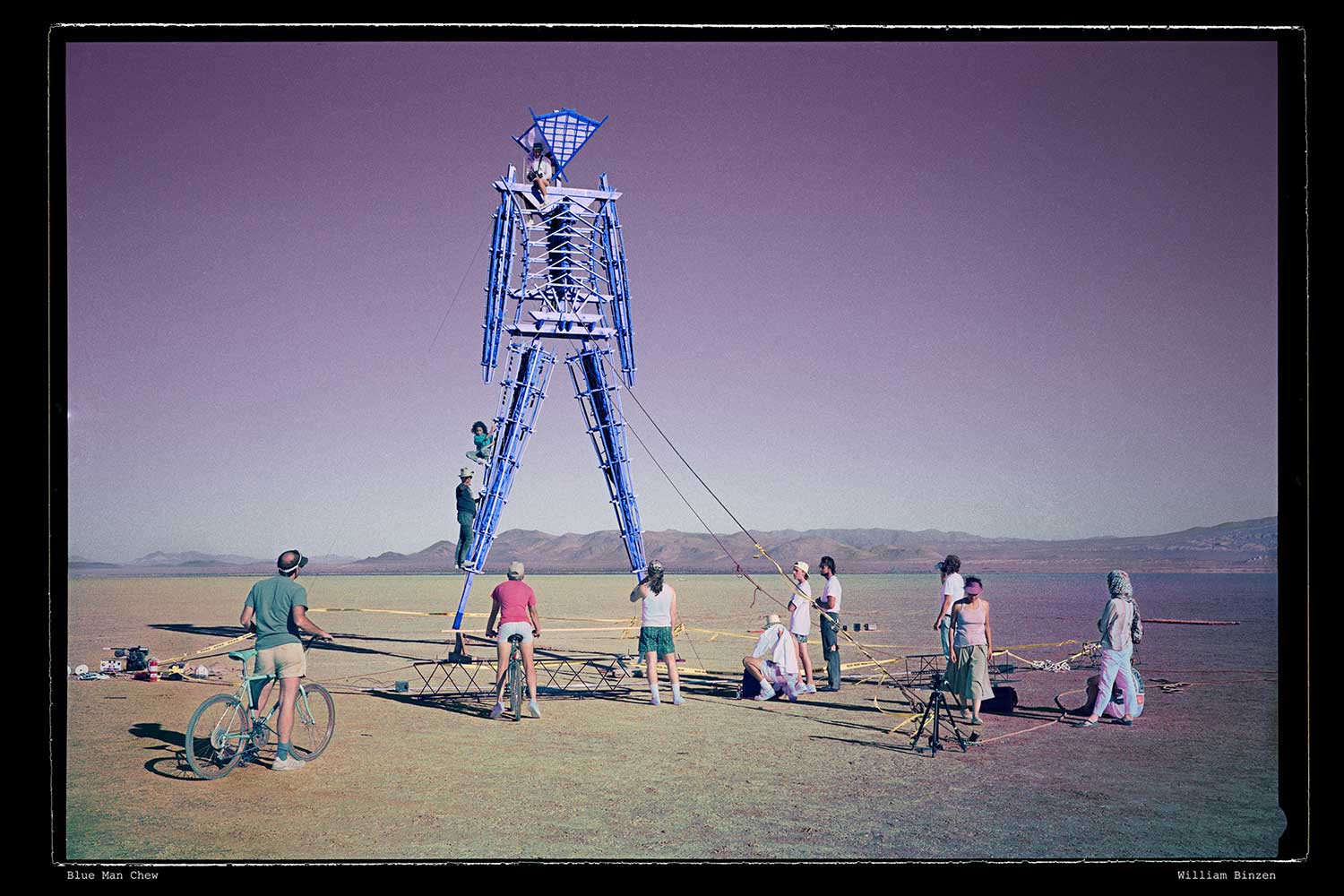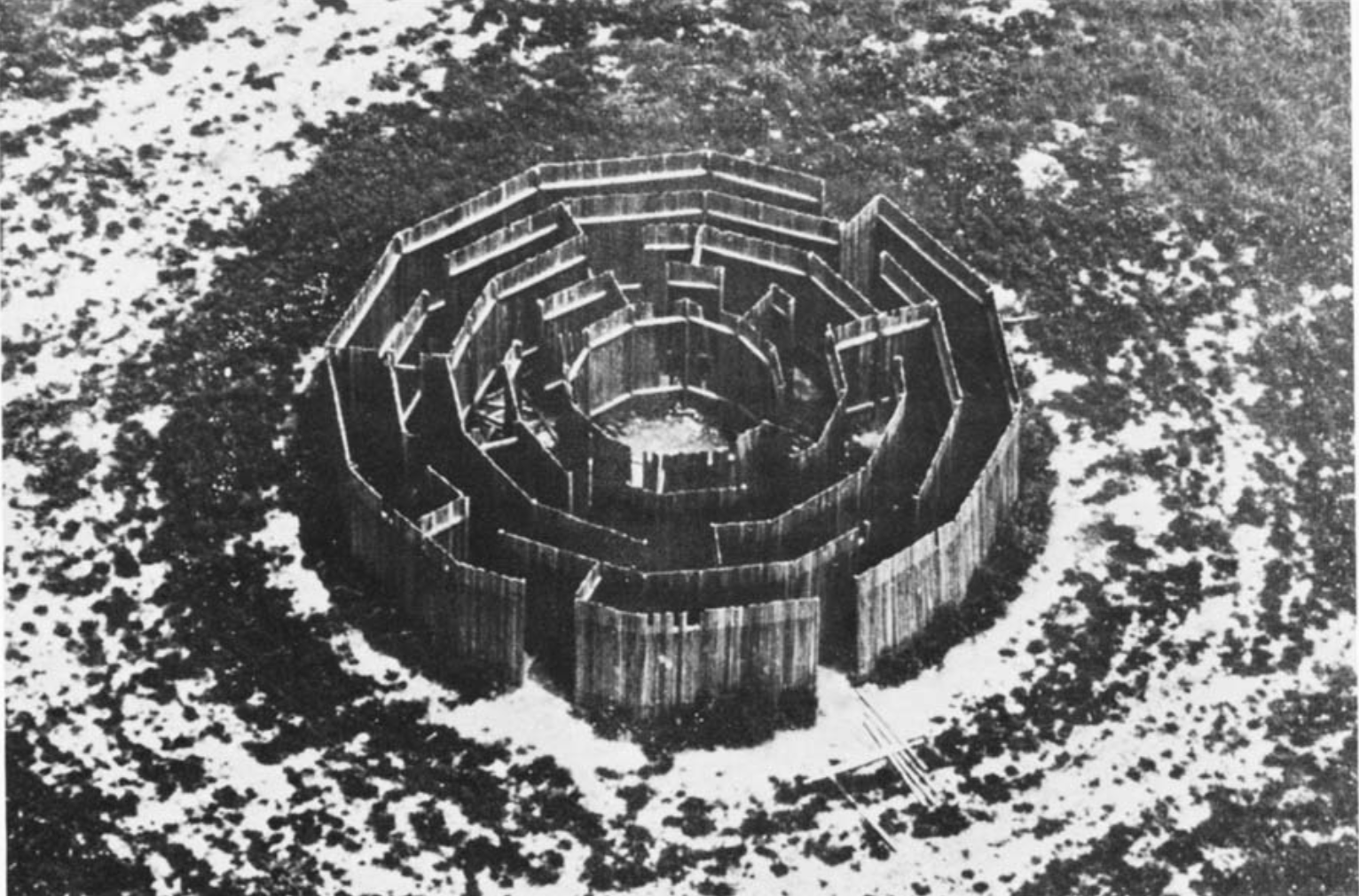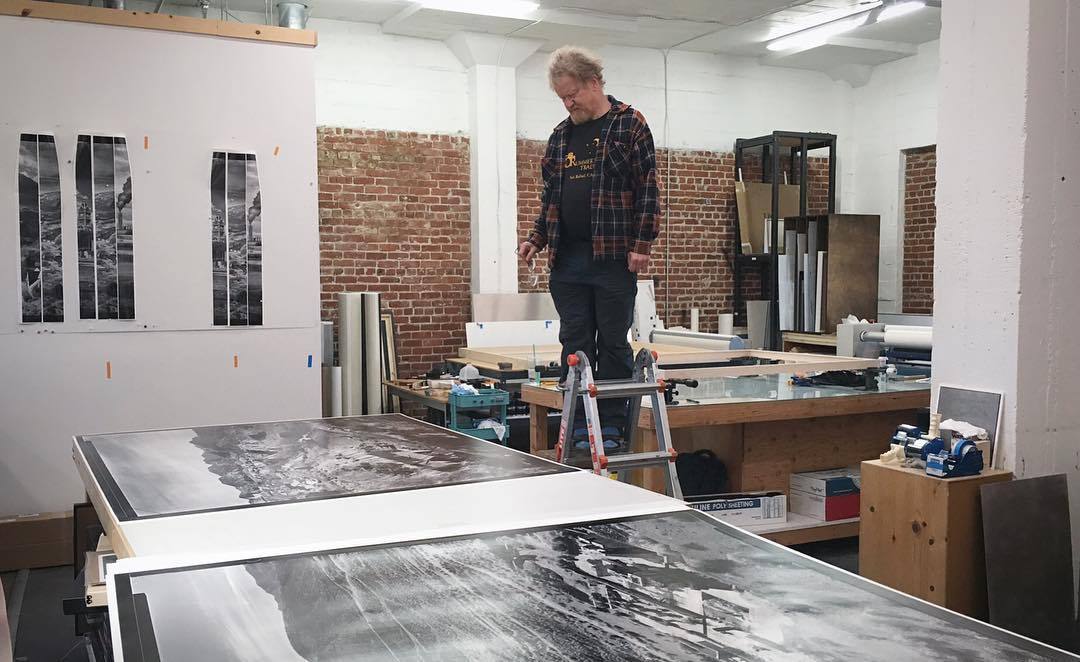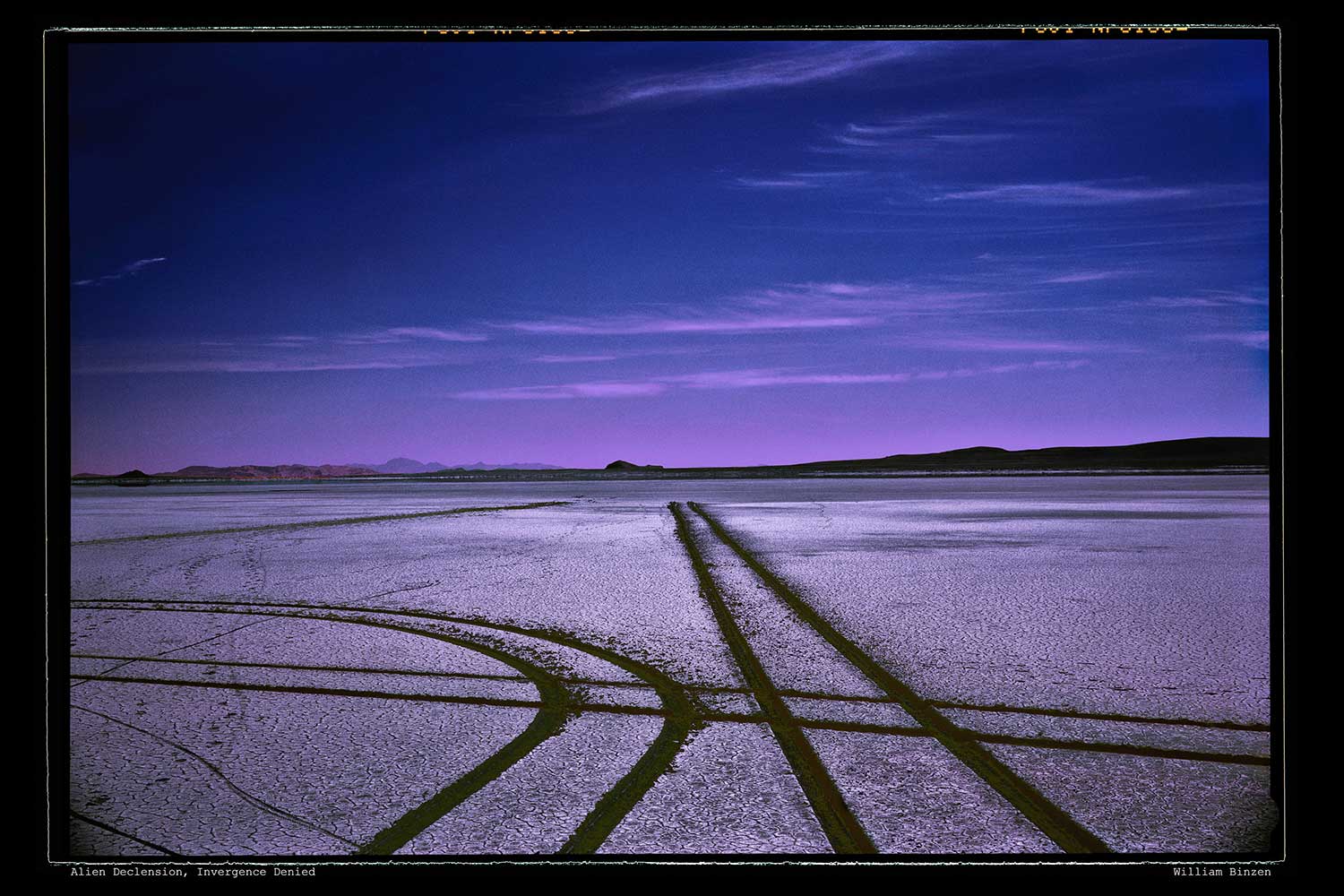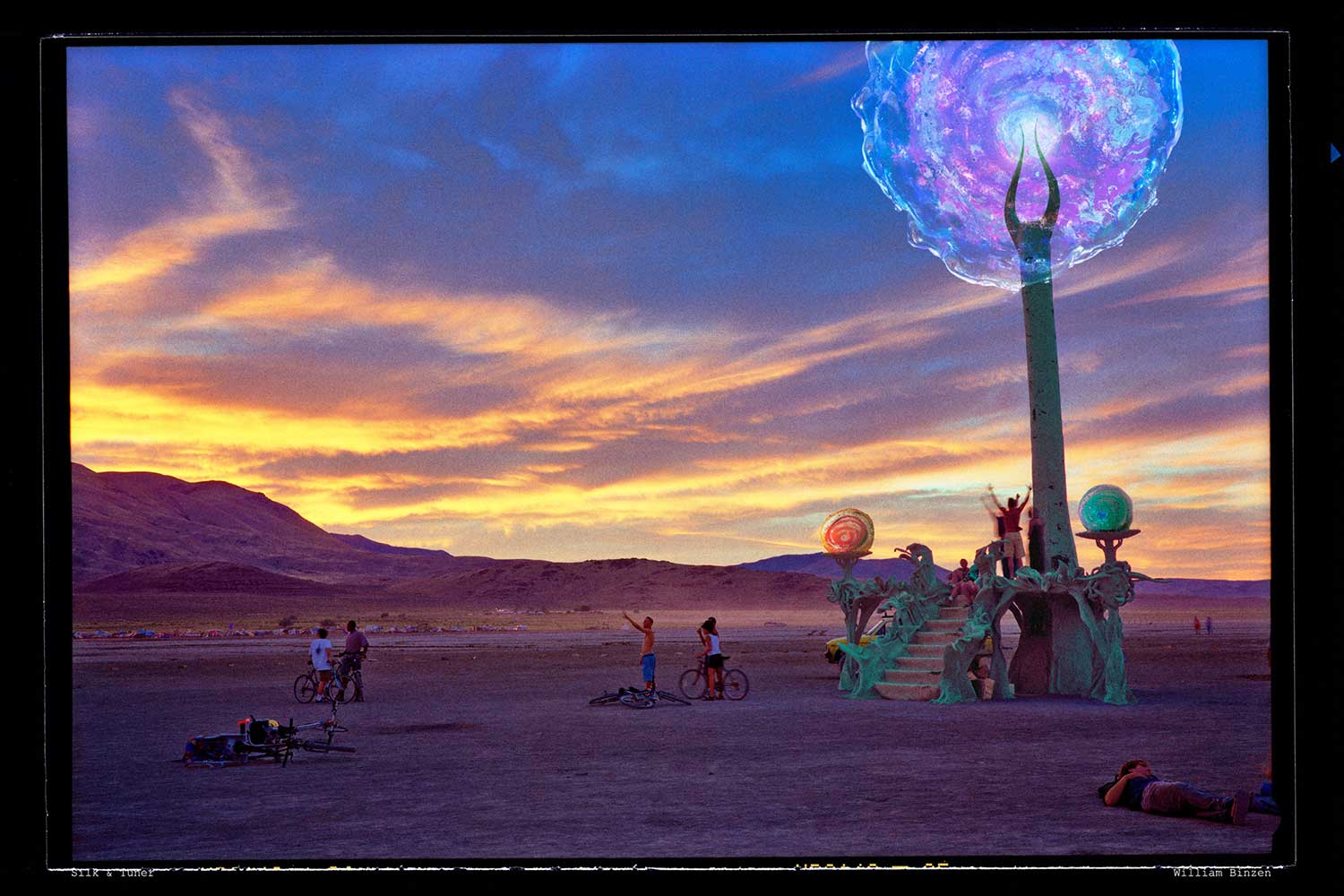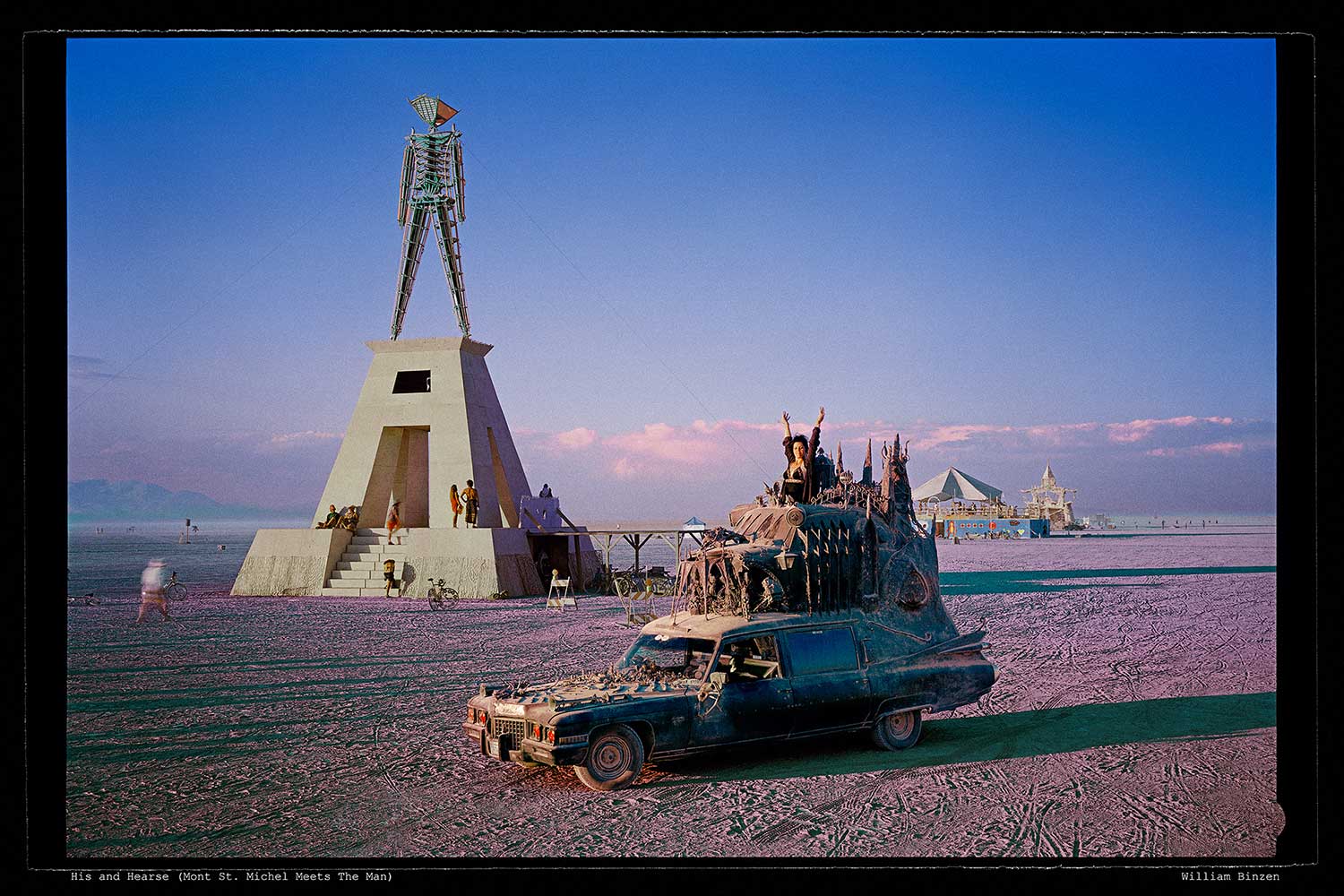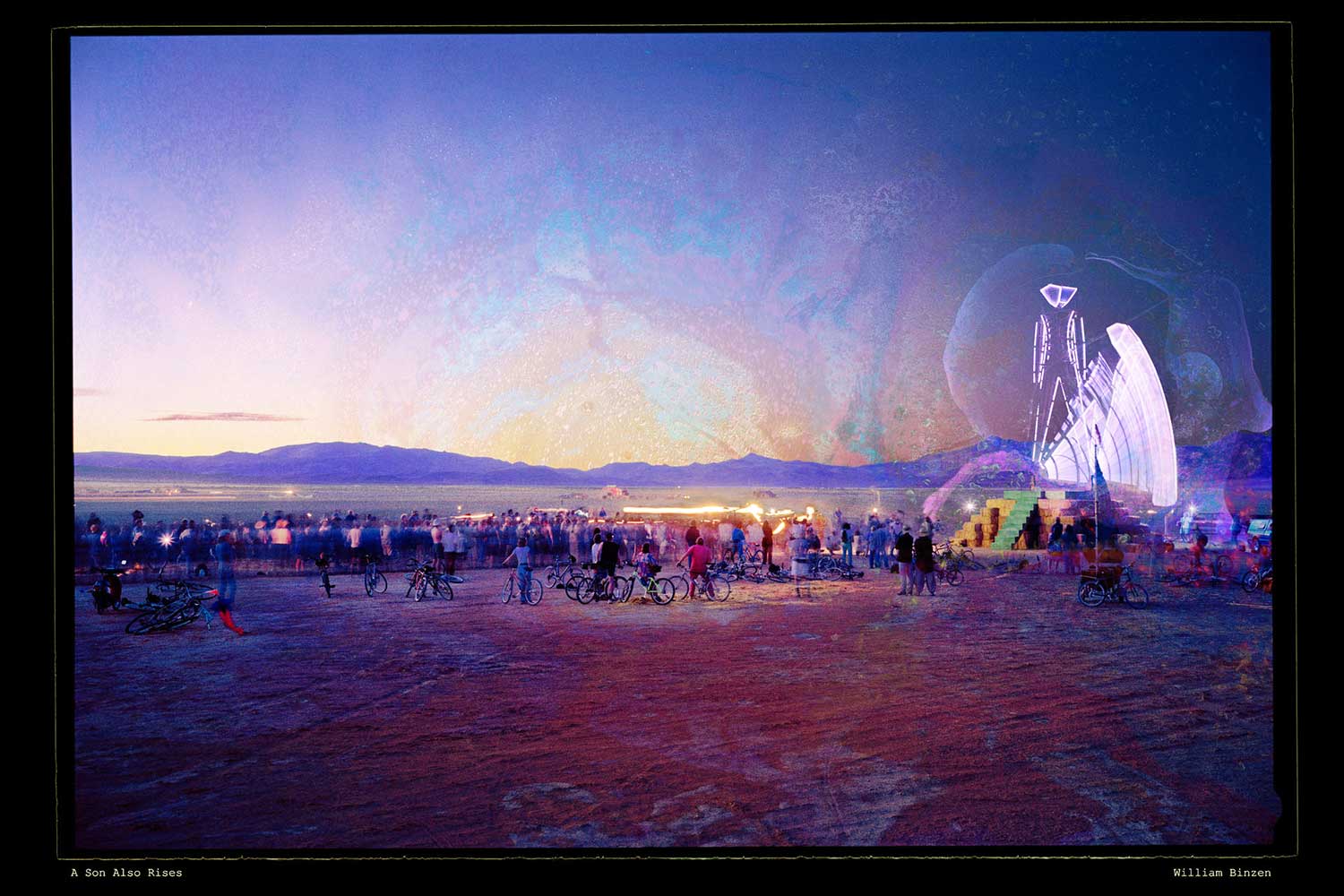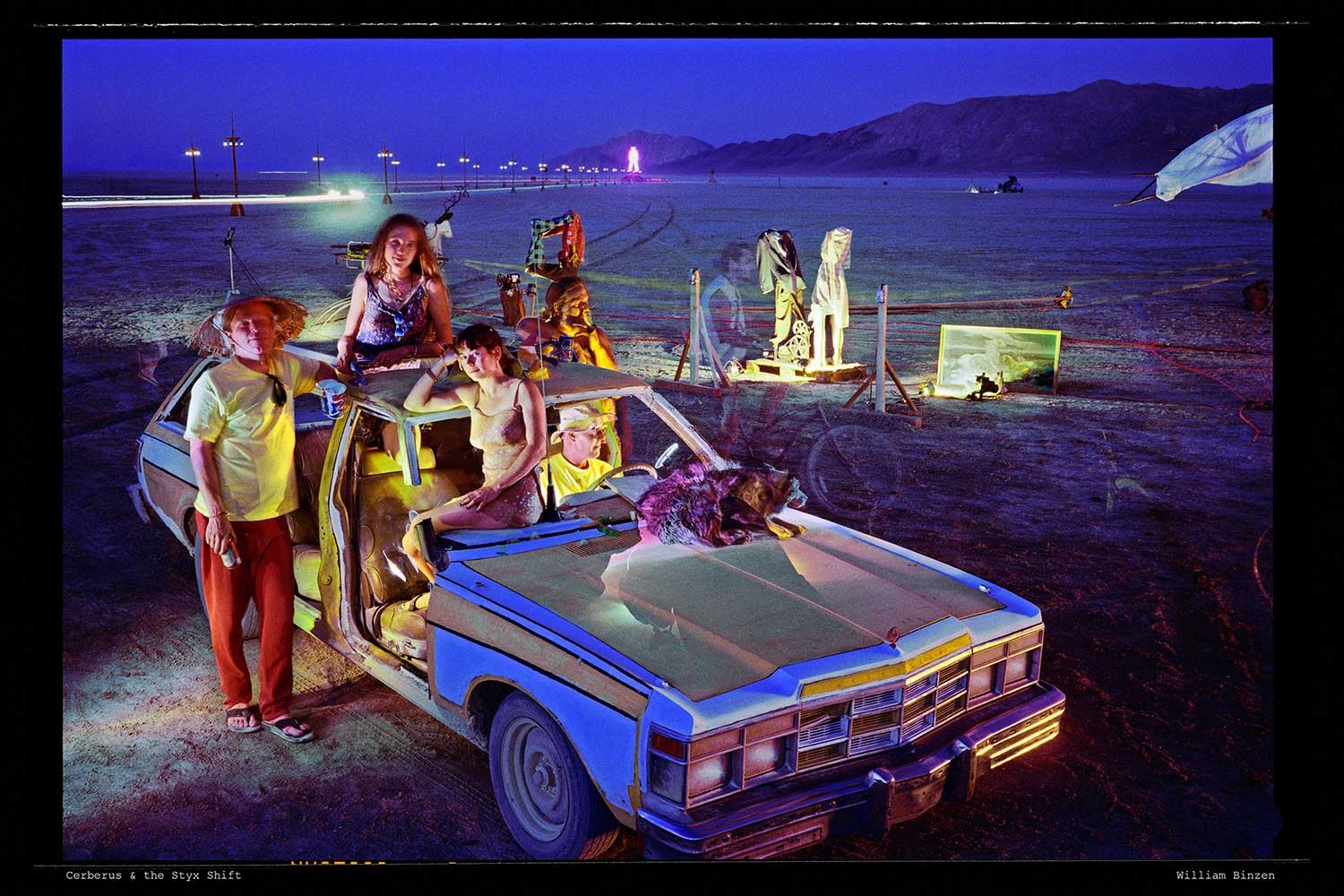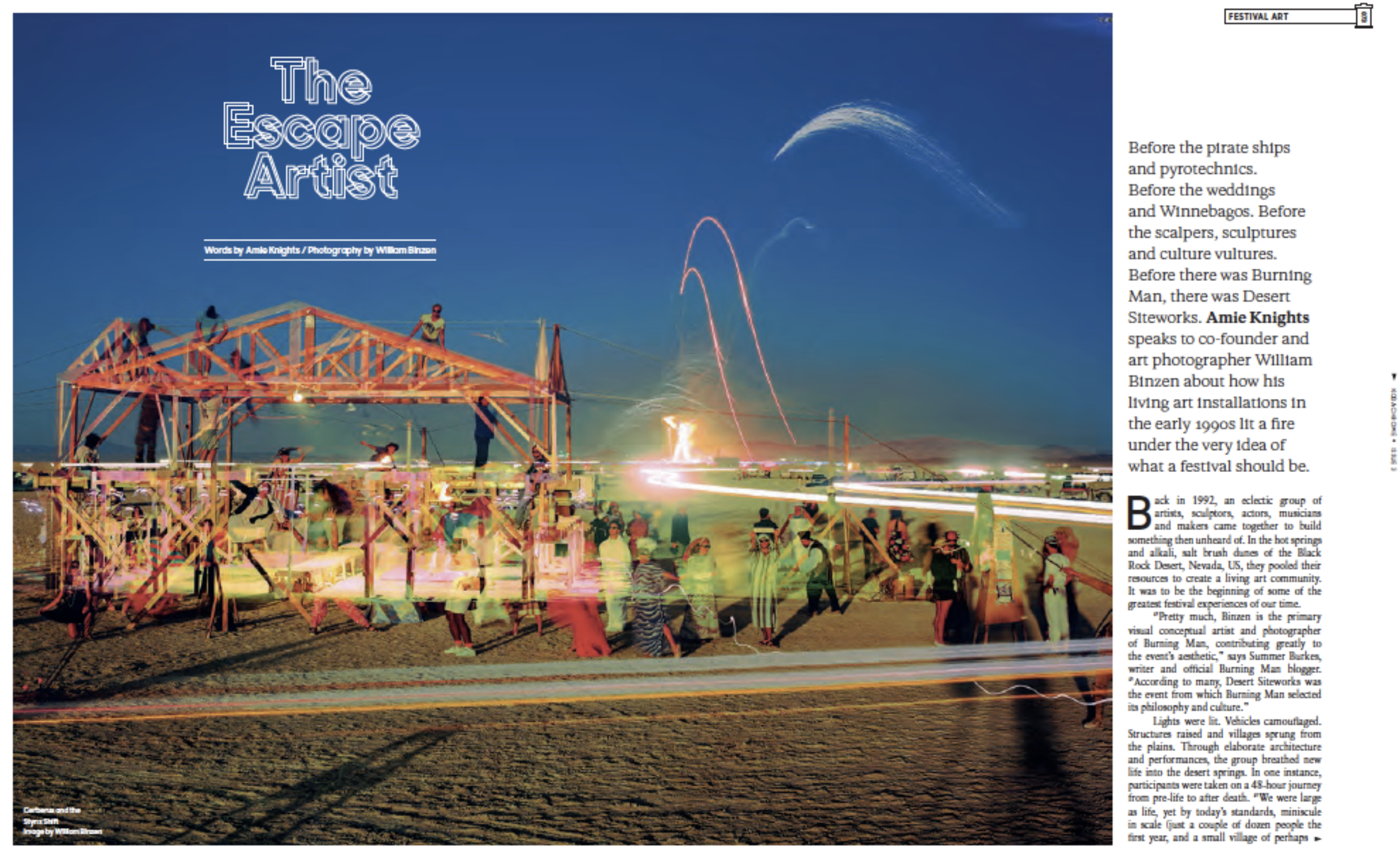William Binzen
William Binzen grew up in an artistic household. His father was a photographer, sketcher, painter, and sculptor. He attended the San Francisco Art Institute, where he earned his Master of Fine Arts. He started his photography when he was given a Brownie Hawkeye camera. Binzen moved from the East Coast in 1974 to earn an MFA at the San Francisco Art Institute in the mid-1970s.
Binzen met Larry Harvey at the 1990 Baker Beach event (which was disrupted by park police, preventing the actual burn from taking place). In the early 90s, Binzen had a grand vision for bringing art to Black Rock desert. He would have extended discussions several times a week with Larry.
Sculpture in the Expanded Field
Influenced Ideas of Art in the Desert
Binzen’s ideas about art in the desert was inspired, in part, by 1979 Rosalind Kraus essay “Sculpture in the Expanded Field,” and Kraus’s understanding of the importance impermanence in art. Binzen’s explanatory diagrams for Desert Siteworks are modeled directly on the schematics published in this essay.
Binzen sent Harvey a series of “Desert Tracts” about his thoughts regarding Kraus’s ideas (among other artists), his own artistic approach, and ideas for Burning Man. Binzen’s formation of a self-intentional performance community was based on using temporary site-specific artworks for personal transformation, and the habitats he developed (shade structures and desert yurts among them) were important to both the character and physical design the Burning Man community would later adopt.
In 1992, Binzen began Desert Siteworks (DSW), a week-long arts festival in Black Rock desert. The first one was held on the summer solstice - the day the first four Burning Man gatherings were held. He created his architectonic sculpture, Desert House" at that gathering, and at Larry Harvey’s suggestion, brought it to Burning Man later that year, where it served as the predecessor of the Central Camp.
Desert Siteworks continued for three years, and William’s impact on Burning Man has continued until today. Not only did he first bring his own vision of art to the event, but he also brought more established artists to the playa, including Pepe Ozan, who would be one of the most consistent contributors of large scale art and music to Burning Man.
William also photographed both DSW gatherings and Burning Man gatherings, providing the most artistic photographic eye to the playa in the mid 90s. Williams photography has been recognized in the media, and the Reno Museum of Art, the largest repository of Burning Man art in the world, has acquired some of William’s iconic (and extremely large) prints for their collection.
Binzen brought his architectonic sculpture, “Desert House,” to the playa in 1992, where it served as the predecessor of Center Camp. A proposal he sketched for Harvey (on two paper napkins while sitting at Harvey’s kitchen table) on how to lay out the event influenced its current design.
Binzen began photographing Burning Man in 1990, and he continued to do so annually through 2010. His photographs include 8×10, medium-format and 35mm film from the early years as well as later digital imagery. All were then painstakingly re-imagined in Photoshop using the tenets of color theory, and sometimes included composited paintings made with aqueous media on glass. His intent was to make magical realist images that communicated a deeper reality about the feeling and spirit of the event.
By William L. Fox Director, Center for Art + Environment, Nevada Museum of Art made the following observations in anticipation of an exhibition of Binzen’s work":
Even images that at first glance seem the most straightforward of the works, such as the Desert House at Black Rock Springs from 1992, feature carefully arranged tableau with figures balanced throughout the scene, and colors enhanced afterwards to provide contrast and unity along the spectrum. The result is that the photographs imply a dreamlike narrative, and serve as vivid reminders of the enduring power exercised by the early 20th-century art movements of Dada and Surrealism. In this case of the photographs of the Desert House, the images also demonstrate how Binzen’s ideas infiltrated Burning Man. Dada sought to inject chaos and irrationality into art, a reaction to the bourgeois mindset that appeared complicit with the horrors of World War I. Surrealism embraced this idea, seeking to create new states of awareness by making unexpected and illogical juxtapositions among objects and actions. Dada and surrealistic art practices were brought to the West Coast by artists fleeing Nazism and WWII, people such as Man Ray and Max Ernst, which in turn helped give rise to San Francisco’s Suicide Club and Cacophony Society, two organizations that from the very beginning have profoundly shaped the philosophy and workings of Burning Man. Binzen brought those sensibilities to the desert, as well, when he created his interactive, intentional performance communities.
William has produced a variety of portfolios using 8 x 10, medium format and 35mm film; Polaroid, digital and plastic cameras; and sometimes – even now – his Brownie Hawkeye.
In William's work the decisive moment is often fused with magical realism. The result is imagery that holds the tension between content and style, between factual recording and emotion and metaphor, in perfect balance.
“William is one of the important missing links in Burning Man history. It simply wasn’t an artist-driven event before William’s Desert Siteworks, which few people know about because he is so modest and hasn’t promoted his impact. ~ John Law
William lives in northern California, where he divides his time between photography and creating layered musical compositions based on improvisation. In addition to his fine art portfolios, he does commissioned, one-of-a-kind panoramic composites for individual collectors and organizations.
See William’s recent projects here.
To see some examples of commissioned work, please visit BINZEN & WALKER.
William Binzen’s images of Burning Man are the most complex and lovingly conjured of the literally millions of photographs of this highly photogenic event. His wizardly captures and preservation of the fantastical tableaus of Desert Siteworks created by a group of artists and pranksters in the desert over the course of only three years in a distant and magical past, are surely some of the most singular images you will ever see. -John Law, June 2016

